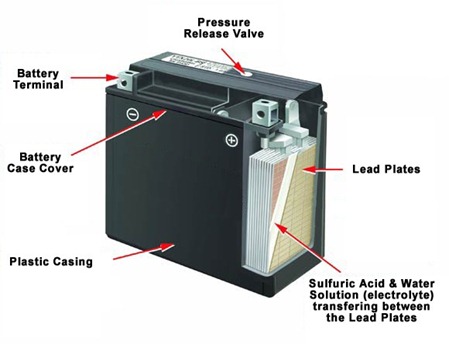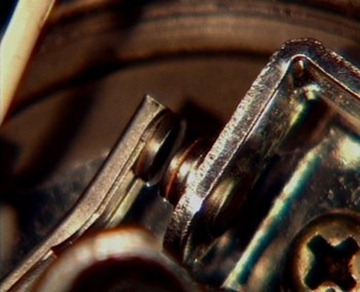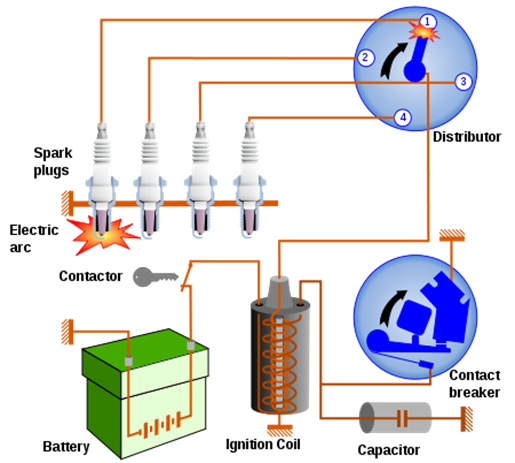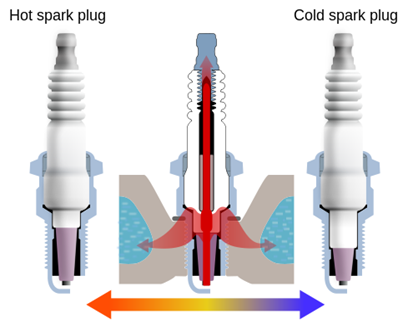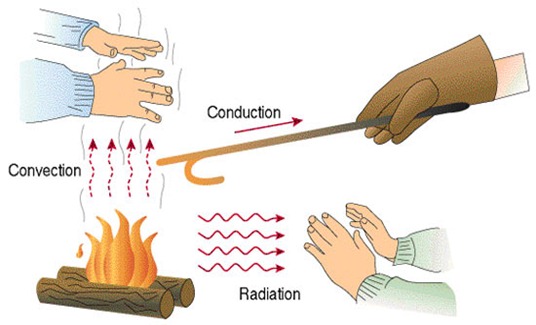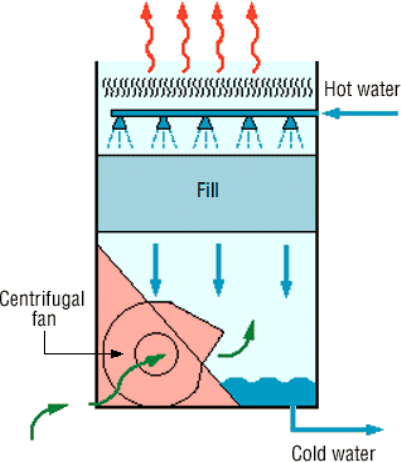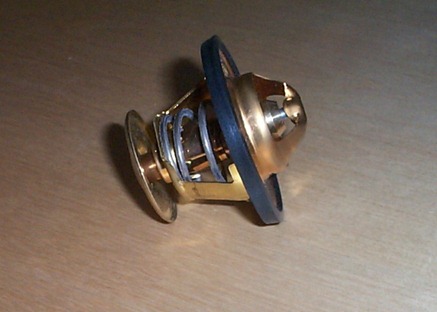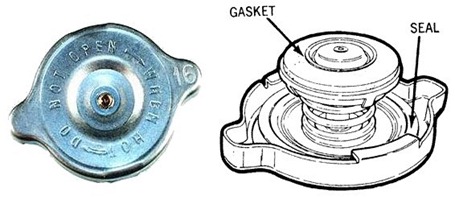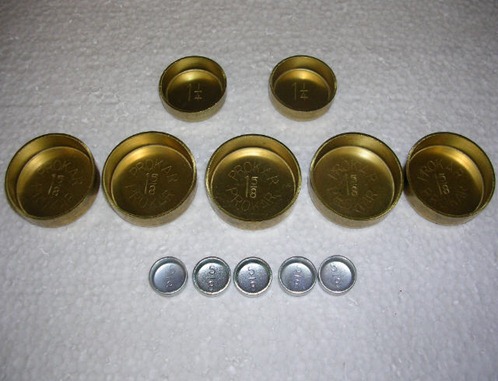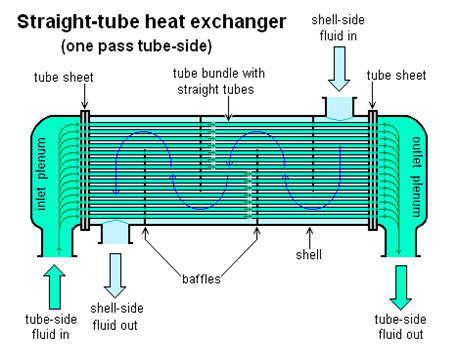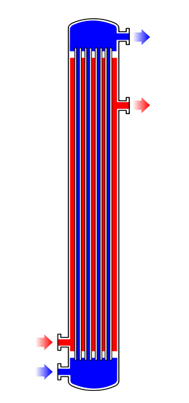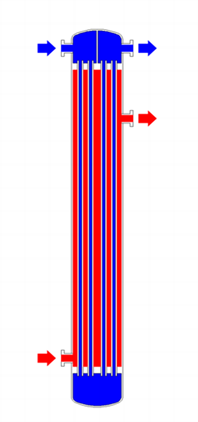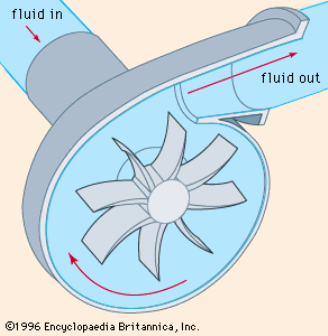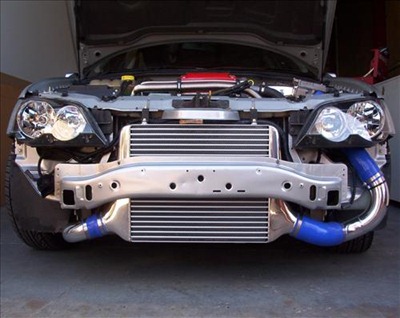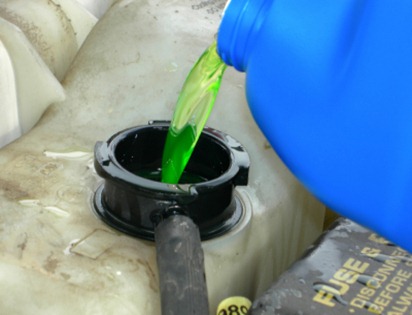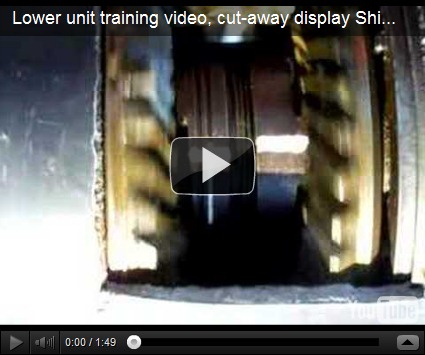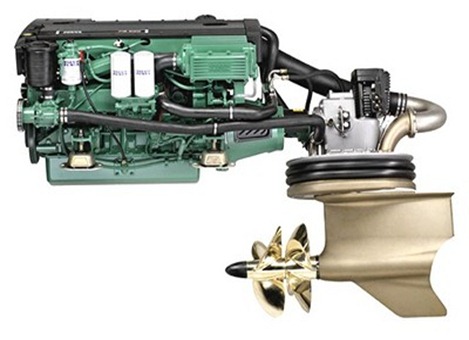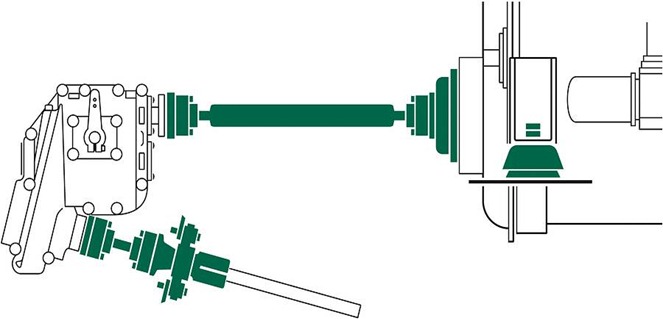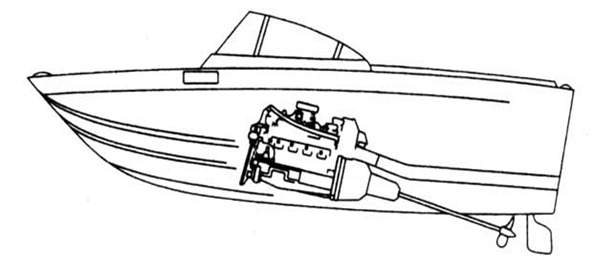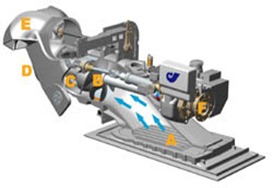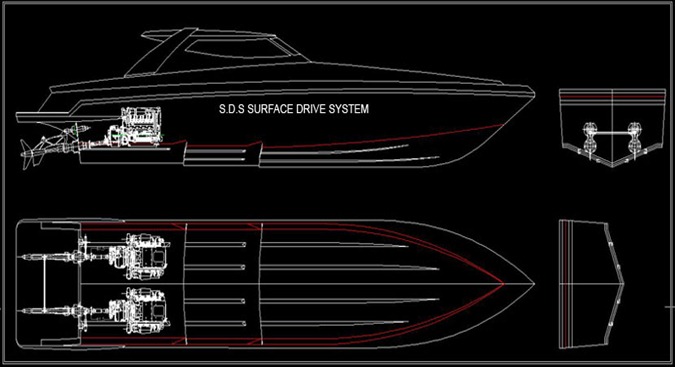What two substances are mixed together to form an electrolyte in a battery?
In a car battery, diluted sulfuric acid and a water solution (electrolyte), are used together with lead plates to create a chemical reaction that produces voltage.
What three elements are required to make a petrol engine run effectively?
In a fourstroke petrol engine, the three main elements required for effective running are Air, Fuel and Spark.
Give an explanation of ''Dwell Angle'' in a distributor.
The dwell angle is the number of degrees of rotation of the cam/distributor during which the points are closed. During each rotation of the cam/distributor, the points must open and close once for each cylinder. The points must stay closed long enough to allow the coil primary current to reach an acceptable value, and open long enough to discharge and produce a spark.As the crankshaft rotates and pistons go through their cycles, the distributor's function is to precisely control the timing of the spark. Each cylinder's spark must occur at a precise time during the rotation of the engine. The distributor is driven off a gear on a camshaft or an idler pulley in the timing chain, such that it rotates at half the speed of the crankshaft. The drive method is dependant on engine manufacturers. The engine makes two complete revolutions in the same time that the distributor makes one 360 degree revolution.
Explain the operation of a ''Kettering Ignition System'', including all components from the battery to the spark plug.
The distributor contains a rotating cam driven by the engine's drive, a set of breaker points, a condenser, a rotor and a distributor cap. External to the distributor is the ignition coil, the spark plugs and wires linking the distributor to the spark plugs and ignition coil.
The system is powered by a lead-acid battery, which is charged by the car's electrical system using a dynamo or alternator. The engine operates contact breaker points, which interrupt the current to an ignition coil.
The ignition coil consists of two transformer windings sharing a common magnetic core—the primary and secondary windings. An alternating current in the primary induces alternating magnetic field in the coil's core. Because the ignition coil's secondary has far more windings than the primary, the coil is a step-up transformer which induces a much higher voltage across the secondary windings.
For an ignition coil, one end of windings of both the primary and secondary are connected together. This common point is connected to the battery (usually through a current-limiting ballast resistor). The other end of the primary is connected to the points within the distributor. The other end of the secondary is connected, via the distributor cap and rotor, to the spark plugs.
The ignition firing sequence begins with the points (or contact breaker) closed. A steady charge flows from the battery, through the current-limiting resistor, through the coil primary, across the closed breaker points and finally back to the battery. This steady current produces a magnetic field within the coil's core. This magnetic field forms the energy reservoir that will be used to drive the ignition spark.As the engine turns, so does the cam inside the distributor. The points ride on the cam so that as the engine turns and reaches the top of the engine's compression cycle, a high point in the cam causes the breaker points to open. This breaks the primary winding's circuit and abruptly stops the current through the breaker points. Without the steady current through the points, the magnetic field generated in the coil immediately and rapidly collapses. This change in the magnetic field induces a high voltage in the coil's secondary windings.
At the same time, current exits the coil's primary winding and begins to charge up thecapacitor ("condenser") that lies across the now-open breaker points. This capacitorand the coil’s primary windings form an oscillating LC circuit. This LC circuit produces a damped, oscillating current which bounces energy between the capacitor’s electric field and the ignition coil’s magnetic field. The oscillating current in the coil’s primary, which produces an oscillating magnetic field in the coil, extends the high voltage pulse at the output of the secondary windings. This high voltage thus continues beyond the time of the initial field collapse pulse. The oscillation continues until the circuit’s energy is consumed.
The ignition coil's secondary windings are connected to the distributor cap. A turningrotor, located on top of the breaker cam within the distributor cap, sequentially connects the coil's secondary windings to one of the several wires leading to each cylinder's spark plug. The extremely high voltage from the coil's secondary -– often higher than 1000 volts—causes a spark to form across the gap of the spark plug. This, in turn, ignites the compressed air-fuel mixture within the engine. It is the creation of this spark which consumes the energy that was stored in the ignition coil’s magnetic field.
Explain why the ''Heat Range'' of a spark plug is so important.
The operating temperature of a spark plug is the actual physical temperature at the tip of the spark plug within the running engine. This is important because it determines the efficiency of plug self-cleaning and is determined by a number of factors, but primarily the actual temperature within the combustion chamber. There is no direct relationship between the actual operating temperature of the spark plug and spark voltage. However, the level of torque currently being produced by the engine will strongly influence spark plug operating temperature because the maximum temperature and pressure occurs when the engine is operating near peak torque output (torque and RPM directly determine the power output). The temperature of the insulator responds to the thermal conditions it is exposed to in the combustion chamber but not vice versa. If the tip of the spark plug is too hot it can cause pre-ignition or sometimes detonation/knocking and damage may occur. If it is too cold, electrically conductive deposits may form on the insulator causing a loss of spark energy or the actual shorting-out of the spark current.
All info and images above from: http://calvinbayley.blogspot.com/
What is a capacitor discharge ignition system system, and how does it operate?
Capacitor discharge ignition (CDI) or thyristor ignition is a type of automotive electronic ignition-system which is widely used in outboard motors, motorcycles, lawn mowers, chainsaws, small engines, turbine-powered aircraft, and some cars. It was originally developed to overcome the long charging times associated with high inductance coils used in inductive discharge ignition (IDI) systems, making the ignition system more suitable for high engine speeds (for small engines, racing engines and rotary piston engines). The capacitive-discharge ignition uses capacitor-discharge current output to fire the spark plugs.
How it works:
A typical CDI module consists of a small transformer, a charging circuit, a triggering circuit and a main capacitor. First, the system voltage is raised up to 400-600 volts by a transformer inside the CDI module. Then, the electric current flows to the charging circuit and charges the capacitor. The rectifier inside the charging circuit prevents capacitor discharge before the moment of ignition. When the triggering circuit receives triggering signals, the triggering circuit stops the operation of the charging circuit, allowing the capacitor to discharge its output rapidly to the low inductance ignition coil, which increase the 400-600 V capacitor discharge to up to 40 kV at the secondary winding at the spark plug. When there's no triggering signal, the charging circuit is re-connected to charge back the capacitor.
Info from: http://en.wikipedia.org/wiki/Capacitor_discharge_ignition
Image from: http://www.afrayspeed.co.uk/images/af_flywheel_kit.jpg
